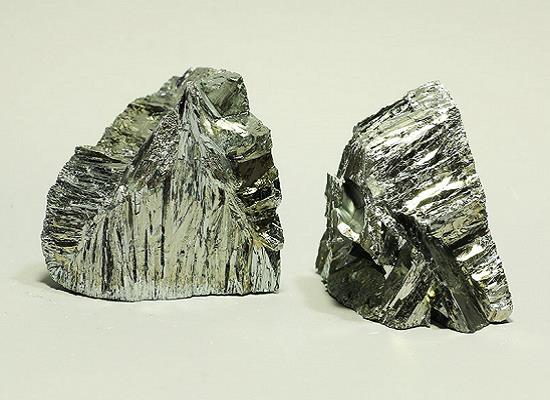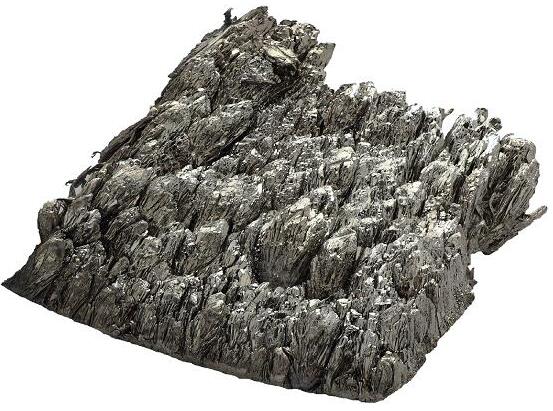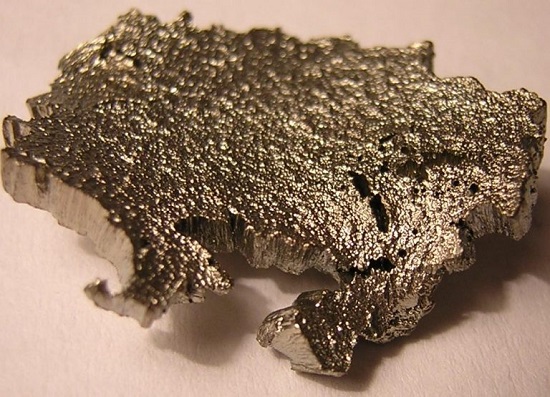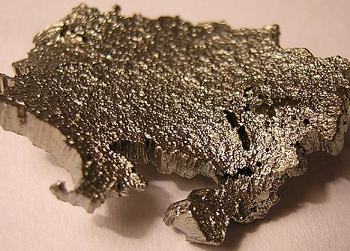Scandium: distribution and applications
General Description
Scandium, a rare element with diverse applications, is prominently used in industries such as aerospace, sports equipment, consumer electronics, energy, and lighting. Its incorporation into high-strength aluminum alloys improves fuel efficiency in aircraft and enhances performance in sports equipment. In consumer electronics, scandium's thermal conductivity prevents overheating, while its corrosion resistance ensures durability. Scandium-stabilized zirconia enhances the efficiency of solid oxide fuel cells, promoting sustainable energy sources. Additionally, scandium improves color rendering in specialized lighting systems. With its lightweight construction, improved performance, energy efficiency, and durability, scandium continues to find new applications, expanding its significance in various sectors.

Figure 1. Scandium
Distribution
Scandium is a chemical element with the symbol Sc and atomic number 21. It is a silvery-white metal that belongs to the transition metals group. In terms of abundance, scandium is considered a rare element in the Earth's crust. It is primarily found in minerals such as thortveitite, euxenite, and gadolinite. The distribution of scandium in the Earth's crust is not uniform. It is typically found in trace amounts, ranging from 2 to 25 parts per million (ppm). The highest concentrations of scandium are often associated with rare earth element deposits. These deposits can be found in various regions around the world, including China, Russia, Madagascar, and India. In addition to its presence in minerals, scandium can also be found in small quantities in some natural waters, soils, and plants. However, due to its rarity, the extraction of scandium as a standalone element is challenging and costly. Scandium has various applications in industry, particularly in the production of high-strength aluminum alloys used in aerospace, sports equipment, and consumer electronics. The limited availability of scandium makes it a valuable and sought-after element in these applications. In conclusion, while scandium is not widely distributed in significant quantities, it plays a crucial role in specific industries due to its unique properties and applications. 1
Applications
Scandium, with its unique properties, finds applications in several industries. Despite being a relatively rare element, its applications are diverse and valuable. One of the prominent uses of scandium is in the aerospace industry. It is employed in the production of high-strength aluminum-scandium alloys, which offer exceptional strength-to-weight ratios. These alloys are utilized in aircraft components such as landing gear, aerospace structures, and helicopter blades, contributing to weight reduction and fuel efficiency. Scandium-aluminum alloys also play a crucial role in the sports equipment sector. Scandium-enhanced baseball bats, lacrosse sticks, and bike frames exhibit higher strength, improved durability, and reduced weight. This makes them popular among athletes looking for enhanced performance and maneuverability. In consumer electronics, scandium finds application in mobile phones, tablets, and laptops. Its excellent thermal conductivity enables efficient heat dissipation, preventing devices from overheating during intensive usage. Moreover, scandium's corrosion resistance ensures the long-term durability of electronic components. Scandium-stabilized zirconia is used in solid oxide fuel cells (SOFCs). By incorporating scandium, the electrolyte's ionic conductivity is enhanced, improving the fuel cell's efficiency and reducing operating temperatures. This advancement promotes the adoption of SOFCs as a clean and sustainable energy source. Additionally, scandium is utilized in specialized lighting systems, such as high-intensity discharge lamps and mercury lamps. It enhances the color rendering properties of these lights, making them ideal for applications that require accurate color representation, such as film and photography studios. In summary, scandium's applications span across industries like aerospace, sports equipment, consumer electronics, energy, and lighting. Its remarkable properties contribute to lightweight construction, improved performance, energy efficiency, and durability in various products and technologies. As research and development continue, new applications for scandium are likely to emerge, further expanding its utility and significance in different sectors. 2,3
Reference
1.Liu H, Liu H, Nie C, Zhang J, Steenari BM, Ekberg C. Comprehensive treatments of tungsten slags in China: A critical review. J Environ Manage. 2020 Sep 15;270:110927.
2.Verma AS, Suri NM, Kant S. Applications of bauxite residue: A mini-review. Waste Manag Res. 2017 Oct;35(10):999-1012.
3.Syrvatka V, Rabets A, Gromyko O, Luzhetskyy A, Fedorenko V. Scandium-microorganism interactions in new biotechnologies. Trends Biotechnol. 2022 Sep;40(9):1088-1101.





